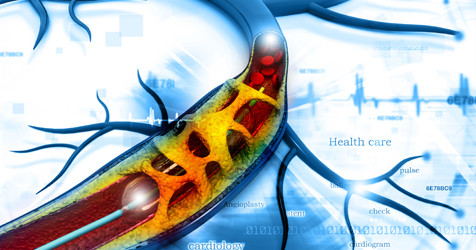
CARDIAC DISORDERS: ALL ABOUT STENTING AND ANGIOPLASTY
Thursday, October 24, 2019WHAT IS STENTING
A stent is a small mesh tube that's used to treat narrow or weak arteries. Arteries are blood vessels that carry blood away from your heart to other parts of your body. A stent is placed in an artery as part of a procedure called percutaneous coronary intervention (PCI), also known as coronary angioplasty.
WHAT IS ANGIOPLASTY
Angioplasty is a procedure to restore blood flow through the artery. The doctor threads a thin tube through a blood vessel in the arm or groin up to the involved site in the artery. The tube has a tiny balloon on the end. When the tube is in place, the doctor inflates the balloon to push the plaque outward against the wall of the artery. This widens the artery and restores blood flow.
Doctors may use angioplasty to:
- Reduce chest pain caused by reduced blood flow to the heart
- Minimize damage to heart muscle from a heart attack
WHY ARE STENTING AND ANGIOPLASTY DONE?
Angioplasty and stenting has been effective in treating heart attack, stroke and gangrene. For patients suffering a heart attack or stroke, the procedure can save lives. Angioplasty and stenting can also improve the quality of your life by reducing angina and other symptoms of heart disease. But, like any medical procedure, angioplasty and stenting has risks, so it’s important that you take the time to weigh the benefits and risks to decide if they are the right treatment for you.
WHAT ARE THE BENEFITS OF ANGIOPLASTY & STENTING?
Treating blocked arteries with angioplasty and stenting:
- Can save life and reduce heart muscle damage during a heart attack by restoring blood flow to the heart
- May immediately relieve or at least reduce symptoms, such as chest pain, shortness of breath and fatigue, making you feel better and able to do more each day
- Can reduce the risk of stroke can improve functioning of the kidneys can restore blood flow to the legs to prevent gangrene and eliminate the need for amputation Angioplasty and stenting may allow you to recover more quickly than you would from surgery, which can also mean less time in the hospital and returning to your regular activities more quickly.
WHAT ARE RISKS OF ANGIOPLASTY AND STENTING?
Some of the risks are:
- An artery collapsing or closing again, especially when stenting is not an option
- Bleeding or damage to the blood vessel where the catheter is inserted or in the inner lining of the artery
- An allergic reaction to the dye or to the stent
- The procedure may need to be stopped and coronary bypass surgery (CABG) performed if the blockages are too numerous and severe to treat adequately with angioplasty and stenting
- Scar tissue can grow within a stent (restenosis), requiring a repeat procedure
- A blood clot can form inside the stent (stent thrombosis), which may require immediate medical treatment
- Heart attack, stroke or death—the more arteries involved, the greater the risk
- Side effects from medication
WHY KIMS?
KIMS, one of the most sought after cardiology hospitals in Hyderabad, provides angioplasty and stenting, a minimally invasive, image-guided treatment for narrowing and blockage of arteries and veins. Our angioplasty doctor in Hyderabad, Dr. P. Rajendra Kumar Jain, is renowned for angioplasty, heart stenting with a balloon stent. He is one of our best angioplasty surgery specialist.
